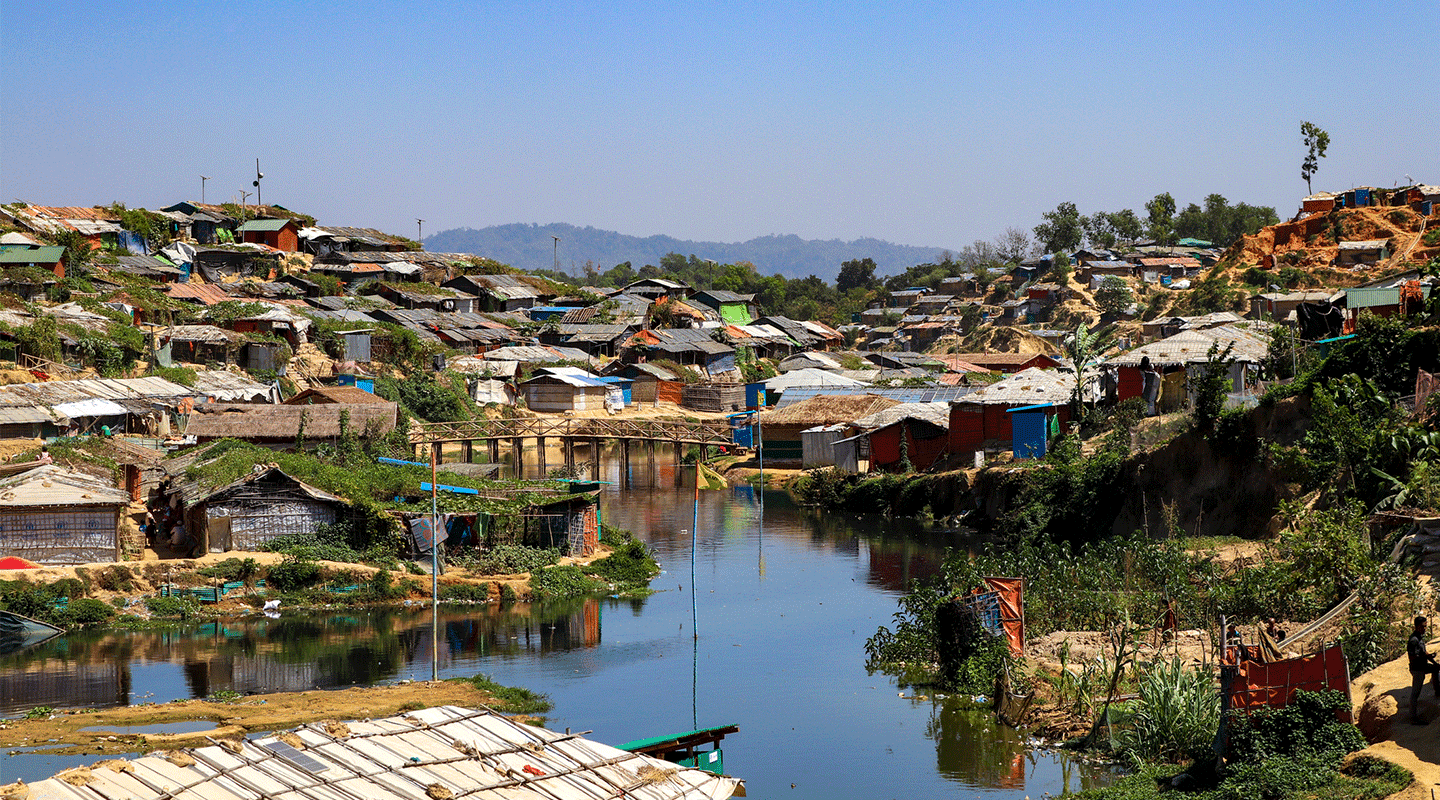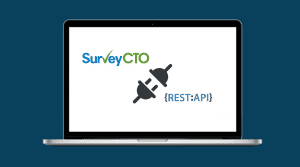Learn how HI uses SurveyCTO’s server datasets to provide essential services to over 30,000 people
Handicap International – Humanity & Inclusion is an internationally recognized organization that has a long track record of service. In 1997, they were the co-laureate of the Nobel Peace Prize for their role in the International Campaign to Ban Landmines, and in 1999, HI was granted special consultative status with the United Nations, which they continue to maintain.
Today, they work in many areas of crisis around the world to remove barriers that can come from age, gender, and disabilities while focusing on three pillars of disability inclusion: accessibility, participation and non-discrimination. This work includes physical and functional rehabilitation services through both mobile and fixed clinics and hospitals. Alongside this hands-on support, HI also generates evidence to advocate for policies that help people with disabilities and other marginalized groups. Specifically, they call for integrating rehabilitation services into healthcare systems, in alignment with the World Health Organization (WHO)’s Rehab 2030, SDGs and Universal Health Coverage (UHC). Finally, in addition to their own efforts, HI also collaborates with, and provides technical support for, NGOs, health facilities and other organizations in their work for vulnerable people.
One of the areas HI works in is Cox’s Bazar, Bangladesh, where they use SurveyCTO to meet data collection and management needs. Last spring, SurveyCTO was able to visit HI in the field in Cox’s Bazar. Our support team provided hands-on training, while learning first-hand how HI had used server datasets to build an advanced, multifunctional workflow that addressed multiple needs for service providers and data collectors. We’re pleased to be able to share a description of their work in Cox’s Bazar, and explain how they use SurveyCTO to accomplish their goals.
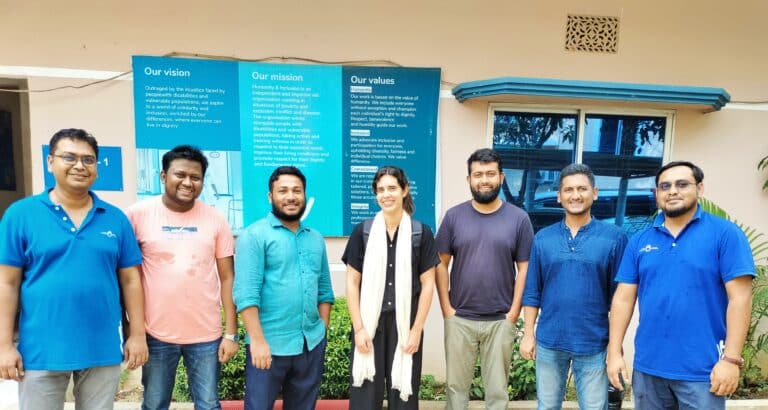
HI’s services in Cox’s Bazar, Bangladesh
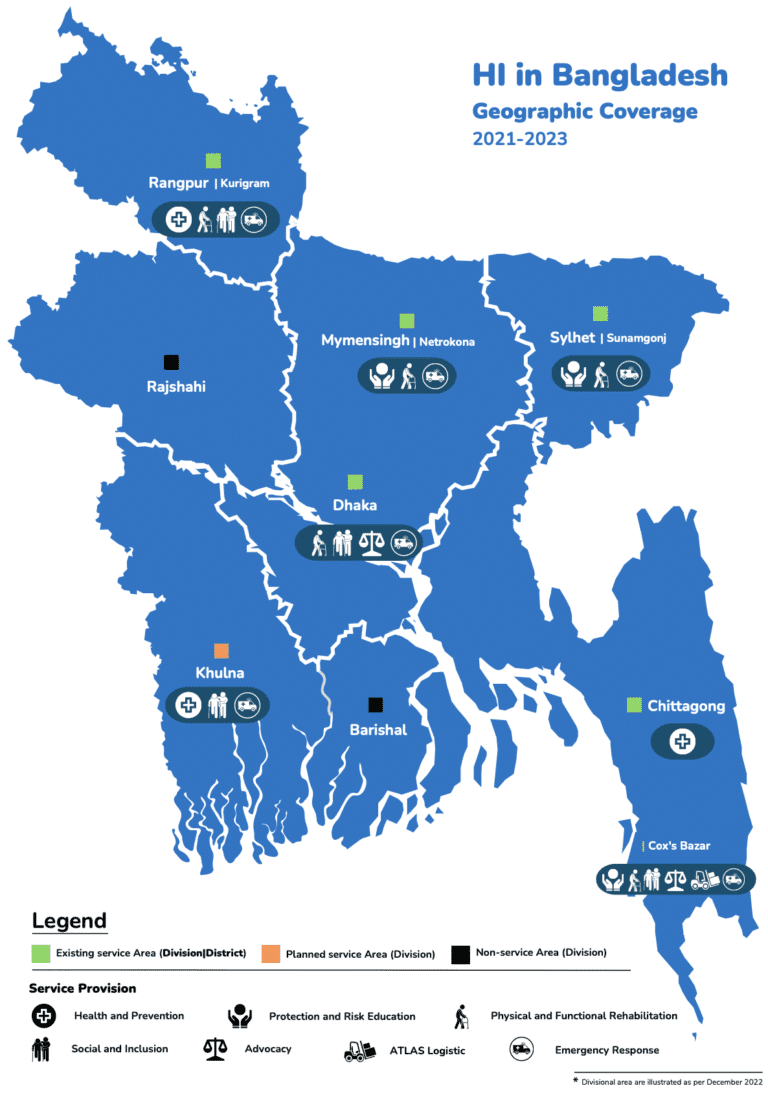
HI has had a presence in Bangladesh since 1997, and has been working in Cox’s Bazar since 2007. Cox’s Bazar is a coastal city in Bangladesh that hosts 33 refugee camps that are home to over 1 million displaced Rohingya people from Myanmar. Kutupalong, the most popular refugee camp in the world, is located here.
Read more about HI’s response to the crisis in Myanmar.
In Cox’s Bazar, HI provides specialized services to persons with specific needs in the Rohingya refugee population and host communities, with a focus on persons with disabilities, children, women, and elderly persons. Their work covers physical and functional Rehabilitation services, Protection, Sexual and Reproductive Health (SRH), Mental Health and Psychosocial Support (MHPSS), Inclusive Education, Inclusive Humanitarian Action and more.
Life in Cox’s Bazar is crowded, under-resourced and highly taxing–and these challenges have impacted HI and how they carry out their work here. In particular, keeping track of the wide range of services they offer and people that they work with is highly demanding. And, since the refugee crisis that created the camps in Cox’s Bazar does not have resolution, HI administers services and collects monitoring data on an ongoing basis, with no pauses or stages in their data collection process. HI has needed creative workflows and a flexible platform to gather data and store data securely, meet these extensive program needs, and provide useful internal reports in Cox’s Bazar.
Flexible use of server datasets manages complex data flows
To address the challenges of working in Cox’s Bazar, HI’s Monitoring, Evaluation, Accountability and Learning (MEAL) team uses SurveyCTO at a high capacity at their clinics and mobile units across the region’s multiple refugee camps and host communities.
That includes using SurveyCTO for:
- Screening of the potential beneficiaries. In the camps where HI works, SurveyCTO is being used to collect data on the potential beneficiaries. HI staff visit door to door blanketly, collecting data on the household members. This process helps greatly identifying the potential beneficiaries, especially when the working area is new to HI.
- Registering beneficiaries in the HI database, using unique IDs and barcodes. SurveyCTO generates unique IDs for beneficiaries, and HI creates and prints an ID card with their assigned ID barcode so that the beneficiaries can easily be identified whenever they want to be registered to receive HI provided services. The same unique barcode is also used later, whenever beneficiaries have a new appointment with HI. As SurveyCTO works offline, this process helps HI to successfully register the new beneficiaries with minimum duplication in multiple sites. While registering the new beneficiaries, HI collects disability, age, gender, and other essential data. This data is used to make inter-sectional analysis of the beneficiaries which contributes to HI global communication, advocacy and steering.
- Keeping track of appointments, group sessions and donations. Using different forms, SurveyCTO is used to collect details of each beneficiary’s medical appointment (including physical rehabilitation, mental health, primary health, and protection), as well as service completion status, attendance of awareness-raising sessions by participants, and the provision of medical supplies and assistive devices like wheelchairs and other items like hygiene kits and sports materials. The data on the assistive device provision helps HI to plan for further logistics support required, with project managers using this data to plan for the next cycle of supplies.
- Displaying information. HI collects critical and sensitive health information while assessing new beneficiaries, and the collected information plays a crucial role in providing them with follow-up services. As HI works mostly in remote areas (mainly camps) where internet service is unavailable/unstable, SurveyCTO helps HI by providing this information offline. HI has designed forms where collected information is loaded from server datasets, and those forms can be accessed/displayed even when the devices have no internet. These information sheets have reduced the usage of paper, while quickening the delivery of services at the field level as this data is more accessible in a digital format. Displaying beneficiary information like this helps HI make quick decisions about the next course of action in a service plan. The data is also more secure in this digital format, and since most of the working areas of HI are affected by scorching heat and torrential rainfall, this feature protects data from such hazards.
- Making referrals for additional needed services. Depending on the assessment made by HI practitioners, beneficiaries might need to be referred to other agencies working in the same or different location, sometimes in other HI areas. SurveyCTO is used for referring to and tracking the status of the whole referral system, whether that reference is ongoing, closed, or needed to refer to other alternative agencies. This ensures that the beneficiaries are receiving the services they have been referred to, and that necessary follow-ups happen if there is delay in the service provision.
- Discharging beneficiaries. Once the beneficiaries’ required care is completed within the scope of HI support, this is registered on SurveyCTO so that they can be officially discharged. HI also evaluates the beneficiaries’ condition based on their discharged time situation, which helps HI measure the impact of their interventions and make informed programmatic strategy decisions.
- Managing Complaints, Feedback, and Response Mechanism (CFRM) cases. SurveyCTO is used to collect complaints and feedback on HI’s service quality and staff behavior. As with the procedures for registering new beneficiaries and tracking appointments, HI tracks the cases of CFRM to deliver timely responses to the complaints and queries raised by beneficiaries, community members, and other stakeholders.
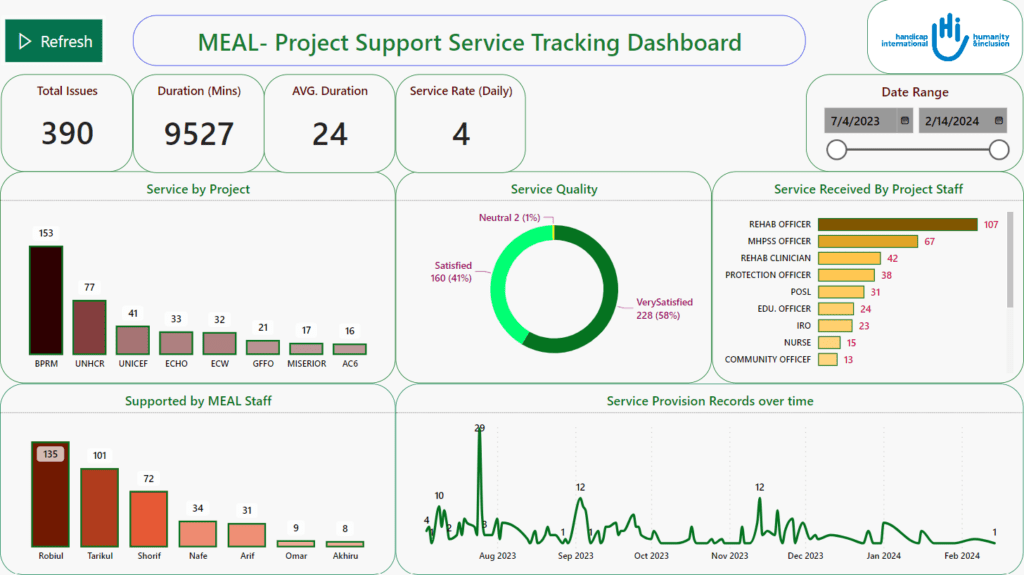
One key aspect of HI’s operations in Cox’s Bazar is that beneficiaries can be assigned to more than one team (Rehabilitation, MHPSS, Protection, Nurse) at the same time, so that they may receive different types of healthcare in whatever order is needed. This workflow requires a digital system that is highly flexible and secure, allowing different providers to only have access to their team forms while being able to select whatever beneficiaries are assigned to them within their area of intervention.
To ensure that beneficiaries could receive any combination of services that they needed at the same time, HI created a custom-built solution of linked forms and server datasets. Altogether, HI uses multiple server datasets to manage their operations in Cox’s Bazar. Since many areas of Cox’s Bazar do not have reliable Internet, field workers submit completed forms and then download the latest versions of forms and datasets at the end of their day, using SurveyCTO’s Refresh functionality.
Besides this beneficiary-facing system, HI’s MEAL team also employs SurveyCTO for other needs:
- Internal and external reports.
- Community-based activities: HI facilitates the work of volunteers from Centre for Disability in Development (CDD) in areas of community healthwork, para-counsellors and outreach volunteers.
The results: Empowering vulnerable people in difficult circumstances
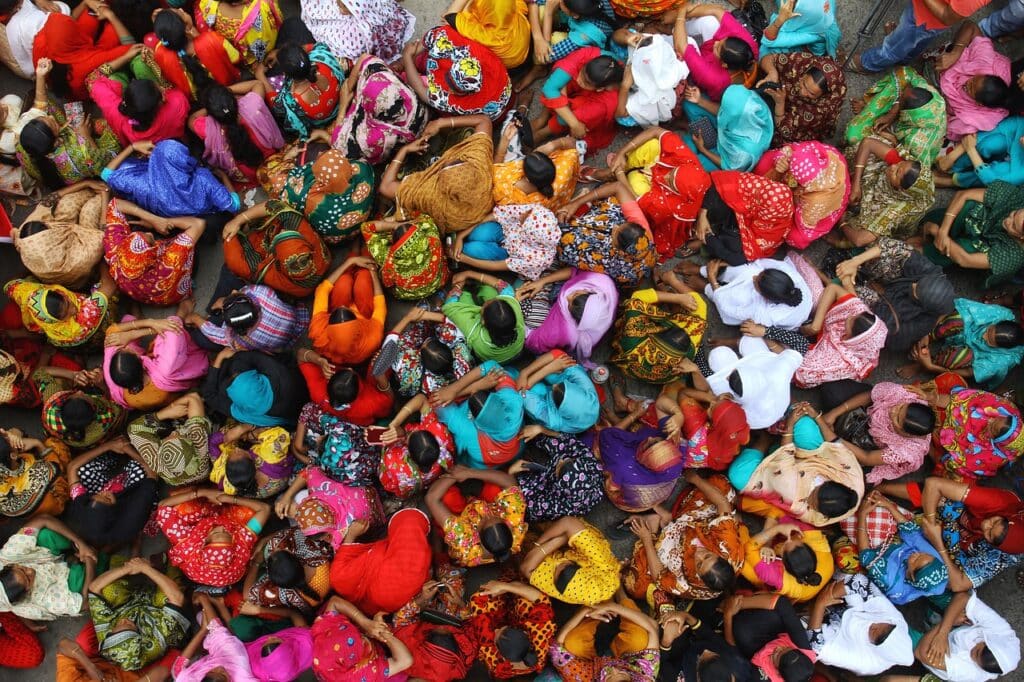
Using these innovative data flows, HI has met a wide range of needs for the Rohingya refugee population in Cox’s Bazar.
They include:
- Functional Rehabilitation: Provides physical and functional rehabilitation for people with disabilities. This work has been at the heart of HI since its inception.
- Mental Health and Psychosocial Support: Centers individuals while considering the intersectionality of important identity factors like age, gender and disability. HI is one of the few INGOs to offer MHPSS at the community level.
- Inclusive Sexual and Reproductive Health: Promotes the right to access sexual and reproductive health information and services for all, and is internationally recognized for its work in Inclusive Sexual and Reproductive Health and Rights (SRHR).
- Inclusive Education: Gives specialized support to children with disabilities so that they can be included in mainstream education in Rohingya refugee camps and host communities in Cox’s Bazar.
- Economic Inclusion: Facilitates access to education, skills training, and employment to empower all individuals and groups to have strong social participation and the best-possible quality of life.
- Disability-inclusive Disaster Preparedness and Climate Change Adaptation: Implements many interventions, such as vulnerability mapping, capacity building, and community awareness to include persons with disabilities in ongoing disaster preparedness related to climate change.
- Social Inclusion: Advises NGOs, donors, multinational companies, and governments on the sustainable inclusion of persons with disabilities in all aspects of society.
Each of these key areas reaches 20,000 – 30,000 people, alleviating hardship and giving people the tools they need for self-determination and a better future.
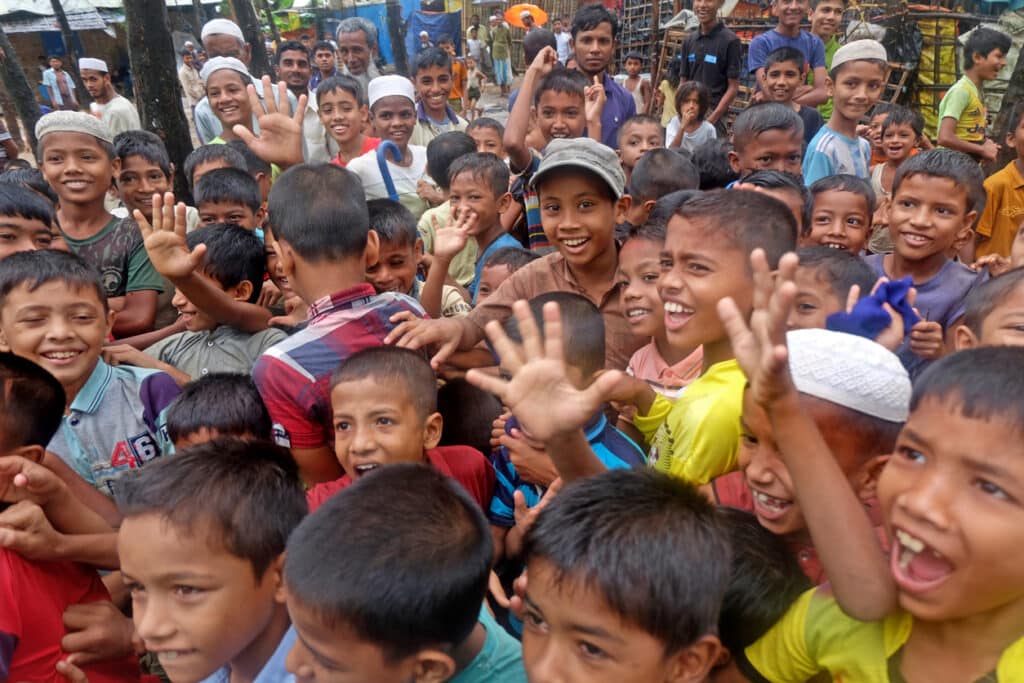
What does HI’s impact through their programs and data flows look like on a personal level for the beneficiaries of their programs? Nothing expresses this better than the words of the people who are directly impacted.
In 2022, HI interviewed the mother of Hussain, a young boy with Diplegic Cerebral Palsy in a camp in Cox’s Bazar, in their annual report. Hussain had difficulty walking and talking. Through HI’s services, he received therapy sessions to improve his muscle strength and coordination, as well as an assistive device and educational materials like books, puzzles, notebooks, pens, art supplies and toys.
The impact on Hussain was significant, according to his mother.
"I could not believe that one day my Hussain can reach this level. I am grateful to HI for their complete support and now I believe that "impossible" is only a word."
Hussain’s mother, Cox’s Bazar, Bangladesh.

